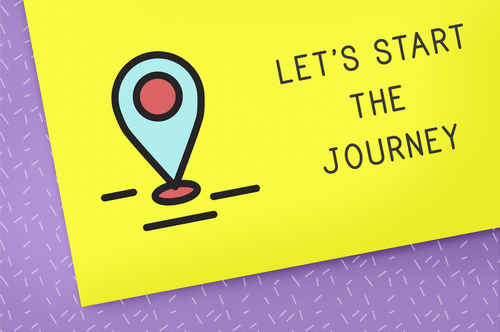Web developers need to take a holistic approach to the web design experience. Customer journey maps offer you a powerful tool to track the chronological user experience.
It provides you with a way to visualize the phases in the customer journey, along with pain points and tasks, giving you the data you need to assess this information concerning your design and development goals.
A customer journey map helps developers build products through the lens of a global view. The map brings the team and the stakeholders to a central communication point. It allows the team and stakeholders to brainstorm problem-solving opportunities that enhance and improve the customer journey, resolving those pain points.
The customer journey map lists communication channels and touchpoints which help break down any gaps in your organization. This post discusses the benefits and needs for including customer journey maps in your development protocols.
Customer Journey Maps Explained
The customer journey map documents and visualizes the visitor experience with your website. It unpacks everything in a step-by-step process experienced by the visitor when engaging with your website and web content.
The customer journey map lists the actions visitors must take to covert. The mapping of the customer journey through your sales funnels lists a set of actions the visitor must take to convert. Typically, you’ll arrange them in chronological order, presenting them as a timeline.
The document lets developers and stakeholders see the entire customer journey from start to finish in one place.
However, we rely on data to develop the customer journey map. Every mapping process starts with exhaustive research, including interviews with prospective buyers, task analysis, and other critical information on your buyer persona and target market.
When building out the map, you’ll need to focus on chronologically establishing these steps, with each step progressing the buyer through the funnel.
Effective digital marketing requires marketers to understand every step of the customer journey. They’ll need to present that information to the developer to ensure the correct flow of the map. This strategy ensures there are no gaps in the experience received by the visitor when navigating their way through the funnel.
What Do You Need to Include in Your Customer Journey Map?
Every customer journey is different. What works for one business won’t necessarily work for others. Taking a “cookie-cutter” approach to building the customer journey map is a mistake, reducing its efficacy and dropping conversion rates.
You’ll need to consider the following when planning the customer journey map.
- Scope – Are you listing the entire customer journey? Or are you focusing on a specific segment of it?
- User goals – What is the visitor trying to accomplish when they visit your website?
- Journey steps – What steps does the visitor need to take to achieve this outcome?
- Visitor tasks or actions – What does the visitor need to do at each step of the customer journey?
- Pain points – Where does the user drop out of the map? What’s causing them to drop out?
- Opportunities – What systems or content can you implement to overcome these pain points?
During your research, it’s important to focus on the following concerning the prospect’s actions in the funnel.
- Emotional response – What does the prospect feel at each phase of the customer journey?
- Emotional triggers – What are the CTAs or content causing the prospect to convert at each stage?
- Barriers and obstacles – What’s stopping the prospect from progressing to the next step of the buyer journey?
- Knowledge – What information does the prospect need to push them onto the next phase of the buyer journey?
- Channels and touchpoints – What device is the prospect using to start the buyer journey?
- Ease of use – How easy is it for the prospect to convert?
What are the Benefits of Including User Journey Maps in Web Design?
There are several benefits to understanding and implementing journey maps in your marketing mix. The customer journey map provides you with a 30,000-foot view of the visitor experience and the steps they need to convert from a prospect into a customer.
This visual tool assists developers with explaining the buyer journey to the stakeholder. It allows for feedback between the developer and the stakeholder, keeping everyone on the same page with the buyer’s journey.
By visualizing the buyer journey through a journey map, you create consistent customer experiences that are relevant across all communication channels. The mapping process allows developers to uncover gaps in the stakeholder’s product offering or organization, creating solutions to these issues.
Examples of these gaps include the following.
- Gaps in siloed stakeholder departments.
- Gaps in communication channels.
- Gaps in visitor knowledge, i.e. what they already know and what they need to know to progress through the funnel.
- Gaps in perceived stakeholder experiences and the actual visitor experience.
After identifying those issues, developers can work with stakeholders to create solutions that bridge the gaps in the buyer journey and visitor experience.
Wrapping Up
The customer journey map offers developers and stakeholders a powerful tool with several benefits to their digital marketing strategy. However, it’s critical for developers to take a data-driven approach to the build, relying on real visitor data to identify gaps and solutions.
It’s important to steer clear of any echo chambers during the planning and design of the journey map. These biases will only serve to create problems with the visitor’s experience, reducing the efficacy and effectiveness of your marketing strategy and sales funnels.
Journey mapping is an intensive process involving all aspects of the stakeholder’s business and marketing strategy. As a result, there is no one-size-fits-all design for the mapping process and every company, brand, or business needs a map that’s as unique as its business model.
Build your journey map using a network of steps and actions tailored to your prospect’s buyer persona. Developers and stakeholders must monitor the buyer journey when it goes live. Use data to tweak and adjust the journey map to improve retention and conversion in your sales funnels.
With the right journey map, you’ll find you get a smooth transition through the funnel, converting your prospect into a customer.





